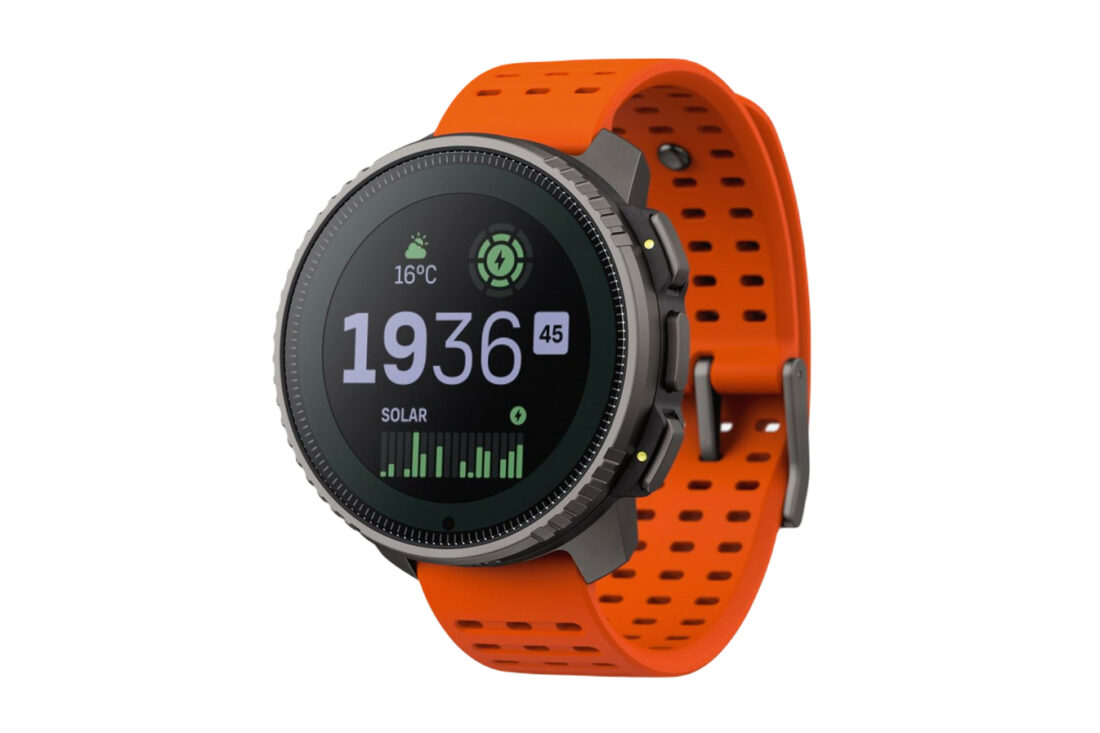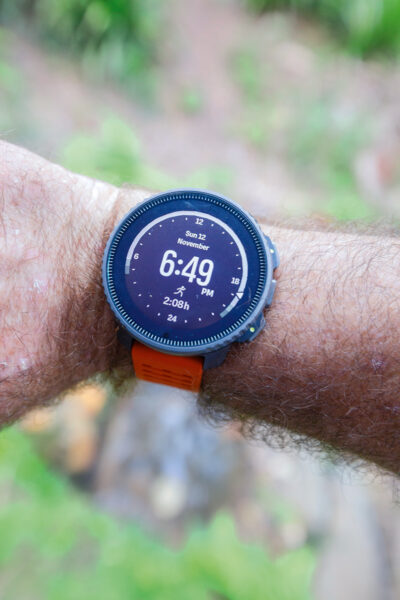
GEAR REVIEW
SUUNTO
VERTICAL SOLAR CANYON GPS WATCH
The best battery life and GPS on offer.
(This review originally featured in Wild #190, Summer 2023)
By James McCormack.
I
t’s funny how things change. For most of my life, getting outdoors meant I eschewed technology entirely. Wasn’t adventure meant to be an escape from gadgetry? From electronics? From the world out there? Slowly, however, my attitude has evolved, although it took a recent event to comprehend how fully that change has been. I was in the Victorian High Country, when my GPS watch, a high-end Garmin Fenix 7, was bizarrely stolen (it’s a long story; if you haven’t already, read my Ed’s Letter in the front of this issue); in the ensuing weeks, I felt well, naked. I’d not only come to rely on my watch; my life felt measurably better for having it.

It hadn’t only been Garmin devices I’d owned in the past; I’d had a Coros Apex as well. But one brand I’d not owned was Suunto. Although a major player, it had—for a few years apparently, or so the reviews went—fallen a little off the pace, so I’d looked elsewhere. But earlier this year, Suunto released the Vertical, a model that has created buzz for both its insane battery life and its excellent GPS performance. Given these are by far the most important attributes in a watch for me—I want a device for multi-day bushwalks, and (because I live near rainforest, and run and walk in it all the time) I need a device with a GPS that can deal with heavy forest cover—I decided to give the Suunto Vertical a go; I’m glad I did. The Vertical comes in two models: a stainless-steel one, retailing for $999; and a titanium one—AKA the Vertical Titanium Solar Canyon, the one I got—which retails for $1299. The latter is a few grams lighter, 74g vs 86g, but that’s not the key reason for forking out the extra bucks; it’s the battery life. While the stainless-steel model has a superb battery—it can go 60 hours while tracking on its highest level of GPS accuracy, and up to 500 hours on lower levels—solar charging on the titanium model gives it the best battery life of any GPS watch on the market. Period. You can, presuming you get enough sun, go 85 hours on a single charge, all at the highest level of accuracy tracking. On lower levels of GPS accuracy, you can go up to 30 days. And if all you want is the time, you can go a year. That’s right—a year!
However, this 85-hour battery life comes with some caveats. Firstly, you need sun. Without it, you’re back to the still-impressive 60 hours offered by the stain- less-steel model. But the second caveat is that I haven’t quite hit those numbers. I haven’t been a long way off, and I’ve gone by far the longest I’ve ever gone between charges, but in the time I’ve had the watch—admittedly not ages—I haven’t quite got there.
But here’s one other key thing: When you hear impressive battery-life numbers being touted by some other watches, that’s always at lower levels of GPS accuracy. But Suunto’s claimed 85 hours, however, is using its highest-level ‘Performance’ mode GPS, which has offered by far the best GPS accuracy I’ve ever experienced.
The watch uses five simultaneous satellite-tracking systems—GPS, GLONASS, GALILEO, QZSS and BEIDOU—connecting with up to 32 satellites. The result? No device I’d tried so far, including the Fenix 7, had ever successfully managed to stay locked onto GPS signals on the heavily forested rainforest trails where I live; the Vertical, conversely, has never lost them. In the past, if I paused, every other device has struggled to re-establish a connection; the Vertical, meanwhile, has happily jumped back into action. Always. I’ve been seriously impressed. Suunto claims the watch has the highest GPS accuracy on the market; from what I’ve experienced, I can’t argue with that.
Despite the watch’s stellar battery life and GPS performance, that’s not to say everything about the Suunto Vertical Titanium Solar Canyon is positive; I’ve found a few niggles, all related to software. The ability to tweak the main watch face is limited compared to other brands; there’s no option to even get your heart rate showing on the main face. You also can’t auto-scroll during an activity, nor have a custom or 0/kmh auto-pause speed (2km/h is the minimum, but if you’re climbing or bushbashing, it’s easy to go slower than that). Almost unforgivably, there’s no option for giving a total elapsed time if you’ve manually paused the activity. C’mon Suunto! You’ve created one of the most amazing watches I’ve ever experienced, then let it be compromised by easily fixable complaints that could be vamoosed in a single update.
Here are a few more nuts and bolts things. It has a nice, large 49mm watch face. It comes standard with the best watch strap of any device I’ve owned. It has all the fitness-tracking functions (sleep, VO2 max, blood oxygenation etc) you’d expect from a flagship watch, and then some. It has 95 sport modes. A flashlight option. A barometric altimeter. It gives storm alerts, too (it predicted two humdingers for me last week). Another real positive is the ability to load free—that’s right, free—offline maps onto the device for navigation and routing. I’ve loved this feature.
In sum, yes, this watch has a few niggles. And whether stainless steel or titanium, no, it is not cheap. (If you’re after bang for buck, Suunto’s recently released Race—with its AMOLED screen and high-end features for just $719, a price point that’s shaken the market—is an excellent option). But if you’re like me, and the two key attributes you desire are the best GPS and battery performance available, it’s very, very hard to look past the Suunto Vertical Titanium Solar Canyon.
NEED TO KNOW
Weight (as tested):
71g
Barometric altitude:
Yes
GPS Bands:
GPS, GLONASS, GALILEO, QZSS, BEIDOU
Max connected satellites:
32
Digital compass:
Yes
STRAVA AND SPORTS COMMUNITIES COMPATIBLE:
Yes
Battery times during activity with GPS (claimed):
Performance: 85h
Endurance: 140h
Ultra: 280h
Tour: 30d
DOWNLOADABLE MAPs:
Yes, free
WATERPROOF:
Yes, to 100m
RRP:
$1299

